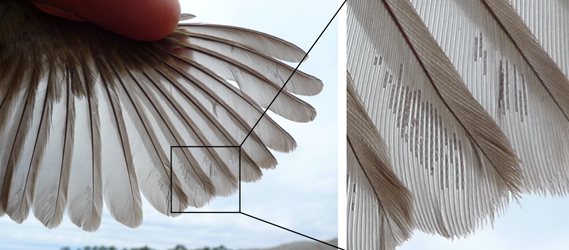Understanding what shapes variation in genetic diversity among species remains a major challenge in evolutionary ecology, and it has been seldom studied in parasites and other host-symbiont systems. Here, mtDNA variation has been studied in a host-symbiont non-model system: 418 individual feather mites from 17 feather mite species living on 17 different passerine bird species. It was explored how a surrogate of census size, the median infrapopulation size (i.e., the median number of individual parasites per infected host individual), explains mtDNA genetic diversity. Feather mite species genetic diversity was positively correlated with mean infrapopulation size, explaining 34% of the variation. As expected from the biology of feather mites, it was found bottleneck signatures for most of the species studied but, in particular, three species presented extremely low mtDNA diversity values given their infrapopulation size. Their star-like haplotype networks (in contrast with more reticulated networks for the other species) suggested that their low genetic diversity was the consequence of severe bottlenecks or selective sweeps. This study shows for the first time that mtDNA diversity can be explained by infrapopulation sizes, and suggests that departures from this relationship could be informative of underlying ecological and evolutionary processes. informacion[at]ebd.csic.es Doña et al (2015) Species mtDNA genetic diversity explained by infrapopulation size in a host-symbiont system Ecol Evol DOI: 10.1002/ece3.1842
http://onlinelibrary.wiley.com/doi/10.1002/ece3.1842/abstract

 Las altas temperaturas están provocando que las lagunas y las marismas de Doñana pierdan agua rápidamente
Las altas temperaturas están provocando que las lagunas y las marismas de Doñana pierdan agua rápidamente




